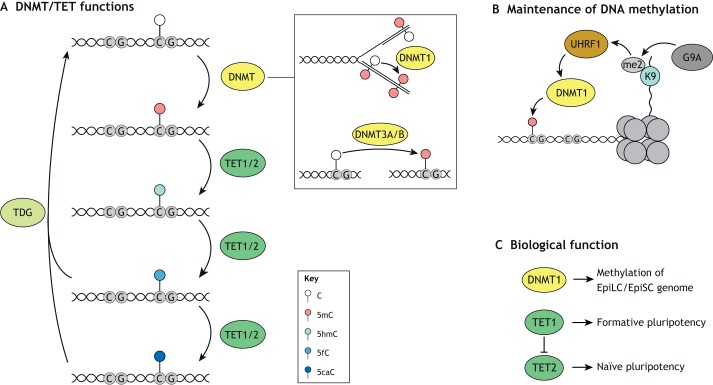Fig. 5.
DNMT and TET functions in ESCs. (A) DNMT proteins catalyze the methylation of cytosine (5mC) at CG-rich regions. DNMT1 converts hemimethylated DNA to fully methylated DNA at replication forks during DNA replication, whereas DNMT3A/B catalyze de novo methylation. TET proteins, in turn, are responsible for the stepwise oxidation of 5mC via the intermediates 5-hydroxymethyl-cytosine (5hmC), 5-formyl-cytosine (5fC) and 5-carboxyl-cytosine (5caC). 5fC and 5caC are depurinated by TDG, which is followed by restoration of unmethylated cytosine by the base excision pathway. (B) Maintenance of DNA methylation via DNMT1 is a major driver of global DNA methylation in S/L-cultured ESCs. DNMT1 was shown to be recruited by UHRF1, which in turn localizes to G9A-dependent H3K9me2-positive domains. (C) DNMT1 is required for global methylation of the EpiLC/EpiSC genome. TET1 and TET2 have antagonistic roles in promoting formative and naïve pluripotency, respectively.

